It’s peak heating season in the Northeast, and many folks have heating oil on their mind. Questions like ‘what is the price of oil near me?’ or ‘how much heating oil will I use in a day?’ are being asked non-stop. So I figured I’d break down how much heating oil you can expect to use in a given day.
Keep this in mind as you’re planning for your next heating oil delivery, or if you run out of oil. If you do run out of oil, you can always add 5 or 10 gallons of diesel to your tank. Knowing how long 5 gallons of heating oil will last will help you determine how many trips to the gas station you’ll have to make!

Factors That Impact Heating Oil Consumption
There are several factors that will impact how much heating oil you use at your house:
- Outside Temperature: Your home’s heating system works to keep the inside of your home at a comfortable temperature. The colder the air outside, the harder it has to work, and therefore the more heating oil you will consume.
- Inside (Set) Temperature: Setting the thermostat around 68-70 degrees is common and provides a comfortable internal temperature. The higher the set temperature, the more heating oil you will use. Consider adding a few layers and lowering the heat to 65 if you want to conserve oil.
- House Size: The larger your house, the more heating oil you will consume. The layout of your house can also impact this. A ranch house is often harder to keep warm than a two-story house because there is more exterior surface area relative to interior space. This means more surfaces for heat to escape through.
- Insulation: A well-insulated house will retain the heat much better than a poorly-insulated house with single-pane or drafty windows. Sealing up drafty windows in an old home will pay dividends and make your home more comfortable on cold winter days.
- Age of Heating System: As heating systems age, they lose some of their efficiency. This means that you will use slightly more heating oil to generate the same amount of heat as a newer system. High-quality oil-fired equipment can last over 30 years. A new furnace can start to pay for itself, however, as you’ll see much improved efficiency.
- How You Heat Your Hot Water: Another consideration is what you’re heating with oil. If your hot water heater runs on oil, you will use more heating oil than just for heat alone. This also means that you will consume oil year round.
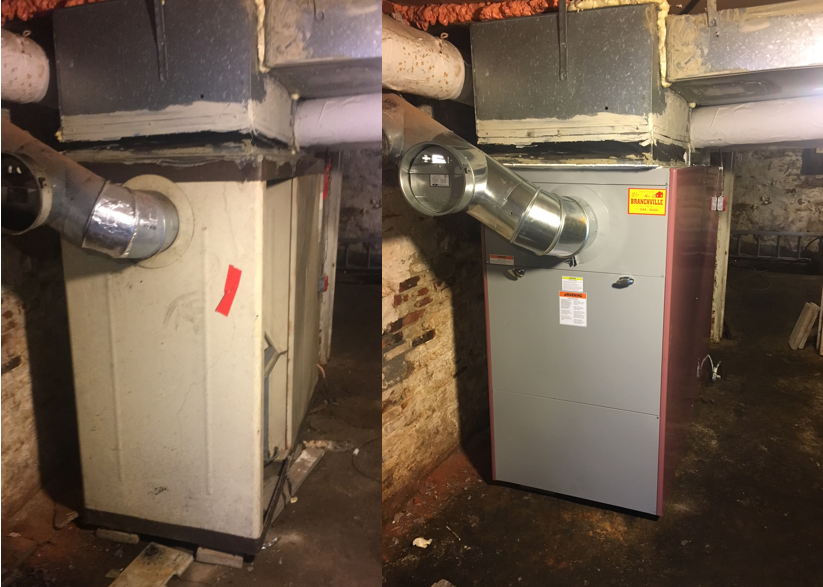
Home Size And Temperature Impact Heating Oil Usage
To keep things simple, we’ll focus on two factors: house size and outside temperature. Find your house size on the chart and you’ll see a range of usages. If your house is well-insulated and new, consider a lower amount. If, like mine, your house is old and poorly-insulated, consider an amount on the high end.
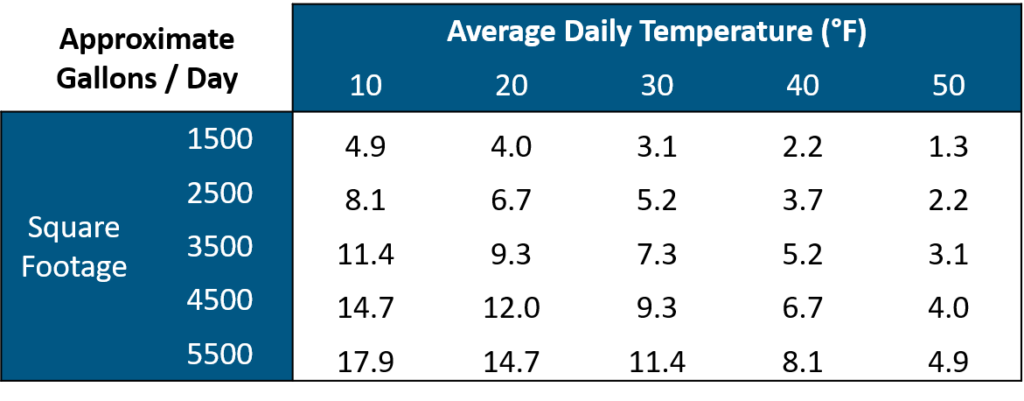
On a typical New England Winter day, expect to use 5-7 gallons of heating oil per day. Use this as a baseline, and plan your oil deliveries accordingly.
If you have a 275 gallon oil tank, you’ve got a maximum capacity of about 250 gallons. You also don’t want to get too low, as you can get sludge in the tank sucked into the lines. With this in mind, consider a ‘usable’ capacity of about 200 gallons. At 5 gallons per day, this should last about 40 days in the winter before needing to be filled up.
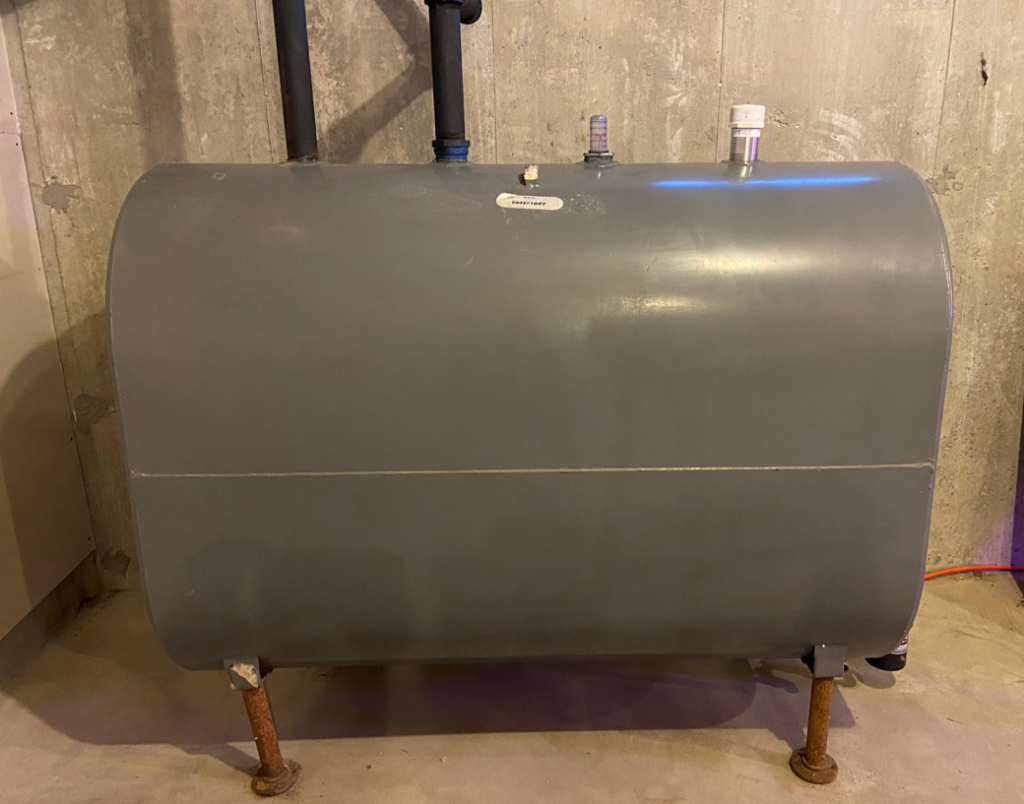
Heating Oil Used Per Year
While most of us only use oil in the winter months, many use it year round. If you use oil for your hot water, expect to use approximately 0.5-0.8 gallons per day in the summer months.
In the winter months, we must go back to the factors above: house size and outside air temperature. For this calculation, we looked at a typical winter in CT.
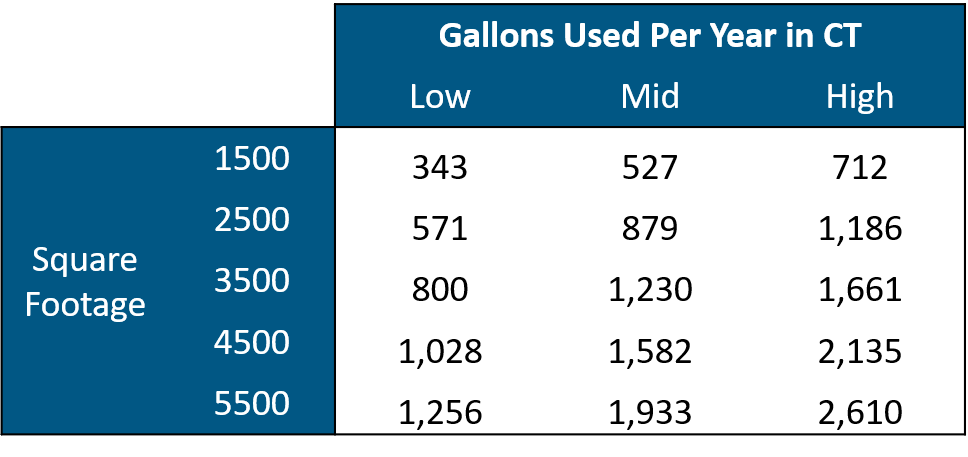
Track Your Heating Oil Consumption
The best way to track your oil consumption is to measure it. The best way to measure your oil consumption is to use a sensor in the oil tank. A Smart Oil Gauge uses an ultrasonic sensor to measure the oil level at hourly intervals throughout the day. It reports these readings onto an app on your phone. It provides history that allows you to track your usage throughout the day, week, month, or year. You can even export the data from your Smart Oil Gauge for true numbers crunching.
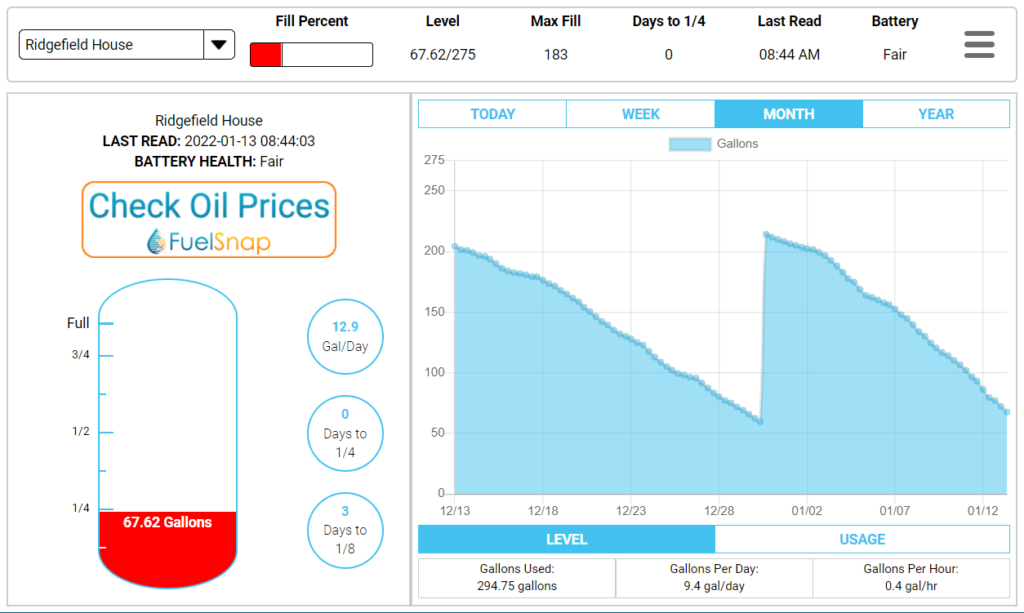
Check Your Oil Tank Regularly Throughout the Winter
You should now be able to estimate your daily usage of heating oil. That said, a good estimate is still no substitute for regularly checking your oil level. Check out this post here on how to read a heating oil tank gauge. Running out of oil can lead to sludge in the feed line, and even worse, frozen pipes. Set a reminder on your phone to check your tank level at least once a week during the cold months. And better yet, get a Smart Oil Gauge and get alerted when your tank is low!
Happy heating,
Steve



